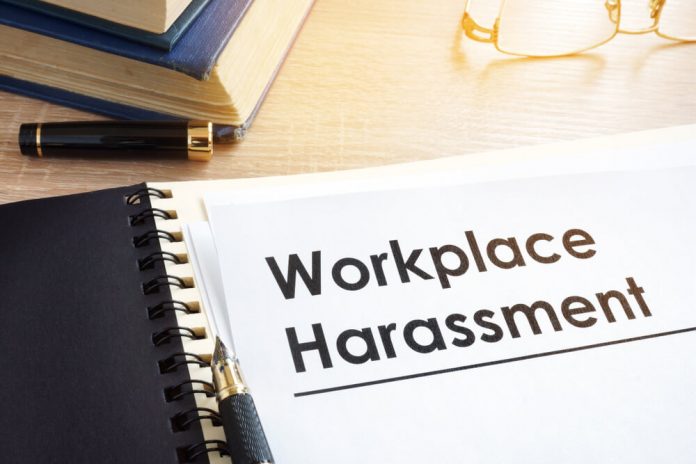This article has been written by Oishika Banerji of Amity Law School, Kolkata. This article provides a detailed analysis of the UGC (Prevention, Prohibition, and Redressal of Sexual Harassment of women employees and students in Higher Education Institutions) Regulation, 2015.
Table of Contents
Introduction
The University Grants Commission (Prevention, Prohibition, and Redressal of Sexual Harassment of Women Employees and Students in Higher Educational Institutions) Regulations, 2015 was issued by the Ministry of Human Resource Development (University Grant Commission) on May 2, 2016. In exercise of the powers provided by clause (g) of sub-section (1) of Section 26 and sub-section (1) of Section 20 of the University Grants Commission Act, 1956 (3 of 1956), the Regulation of 2015 was established, which shall apply to all higher educational institutions in India. Put simply, the Regulation outlines higher educational institutions’ duties in terms of preventing sexual harassment in the workplace. As the UGC Regulations are statutory in character, they apply to all universities and institutions across the nation. The institutions can use a variety of measures to ensure that students are aware of the redress mechanism as well as the appropriate people to contact and report problems. Reporting occurrences of sexual harassment can be done in a variety of ways such as posting notices on bulletin boards, establishing complaint boxes in easily accessible areas across the campus, posting anti-sexual harassment rules on the college website, and emailing students and workers. This article provides an overview of this Regulation and the possible future it holds in a nation like India where sexual harassment has become common parlance.
The structure of the regulation of 2015
The UGC (Prevention, Prohibition and Redressal of Sexual Harassment of women employees and students in Higher Education Institutions) Regulation, 2015 is a statute spread over twelve provisions. Regulation 2 (b) of the aforementioned statute clarifies that the term ‘Act’ with respect to the 2015 Regulation would mean the Sexual Harassment of Women at Workplace (Prevention, Prohibition and Redressal) Act, 2013. Therefore, some of the definitions provided under Regulation 2 of the 2015 Regulation stand similar to the Act of 2013. The 2015 Regulation introduces a list of new terms with respect to its purpose which are:
- ‘Campus’ (Regulation 2(c)): Campus signifies the location or the land where the higher educational institution is located.
- ‘Covered individuals’ (Regulation 2(e)): The term ‘covered individuals’ has been defined exhaustively under Regulation 2(e) of the 2015 Regulation. ‘Covered individuals’ are all those individuals who are involved in a ‘protected activity’ as provided under Regulation 2(j).
- ‘Higher Educational Institute’ ( Regulation 2(h)): Higher educational institute signifies a university under Section 3 of the University Grants Commission Act, 1956.
- ‘Protected activity’ (Regulation 2(j)): Regulation 2(j) of the 2015 Regulation defines the term ‘protected activity’ inclusively, thereby leaving scope for a wide interpretation of the same. A social term by nature, the protected activity includes participating in a sexual harassment proceeding, working with an internal inquiry into suspected sexual harassment practices, or acting as a witness in an investigation by an outside agency or in litigation.
- ‘Student’ (Regulation 2(l)): A person duly admitted and enrolled in a programme in a higher educational institute is referred to as a student.
- ‘Third party harassment’ (Regulation 2(m)): ‘Third-party harassment is another new concept introduced by the 2015 Regulation under Regulation 2(m). The term signifies sexual harassment as a result of an act by a visitor to a higher educational institute. It does not include an employee or a student of the institute. Thus the concept of ‘third party harassment’ refers to the harassment by an outsider.
- ‘Victimisation’ ( Regulation 2(n)): ‘Victimisation’ is also a new term introduced by the Regulation of 2015 under Regulation 2(m). Any kind of unfavorable treatment meted out to a person with an implicit or explicit mention to obtain sexual favor is known as victimization.
Responsibilities of Higher Educational Institutes
Regulation 3 of the UGC (Prevention, Prohibition and Redressal of Sexual Harassment of women employees and students in Higher Education Institutions) Regulation, 2015 lays down an elaborate list of responsibilities for the higher educational institutions to abide by.
The responsibilities that are provided specifically to the Internal Complaints Committee (ICC) have been embedded in Regulation 5 of the 2015 Regulation.
Regulation 6 read with Regulation 8 of the 2015 Regulation states that it is the obligation of the higher education institutions to provide all necessary facilities to the ICC in order to smoothen the process of investigation that the latter will be carried out expeditiously.
Provisions against false or malicious complaints must be made and publicized within all Higher Education Institutions under Regulation 7 of the UGC (Prevention, Prohibition, and Redressal of Sexual Harassment of Women Employees and Students in Higher Educational Institutions) Regulations, 2015, to ensure that the provisions for the protection of employees and students from sexual harassment are not misused.
Regulation 10 of the 2015 Regulation lists down the deterrents to be imposed on anyone found guilty of sexual harassment.
Regulation 12 of the 2015 Regulation that deals with consequences of non-compliance of the provisions laid down by the Regulation of 2015, holds immense importance as it will be ensuring check and balance on the higher educational institutions’ actions towards curbing sexual harassment of women employees and students in their respective territories.
Objective of the 2015 Regulation
If the internal aid of interpretation is applied in order to understand the UGC (Prevention, Prohibition and Redressal of Sexual Harassment of Women Employees and Students in Higher Education Institutions) Regulation, 2015, the long title that it holds describes the general purpose of the statute. In Re Kerala Education bill (1958), the Supreme Court of India had observed that the policy and purpose of any statute may be deduced from the long title and the preamble. Similarly, in Manohar Lal v State of Punjab (1960), the Apex Court had viewed that the long title of the Act or statute, in general, was to be relied on as a guide to decide the scope of the same. By drawing reference from these two cases, it is clear that the objective or purpose of the UGC (Prevention, Prohibition and Redressal of Sexual Harassment of women employees and students in Higher Education Institutions) Regulation, 2015 is to prevent, prohibit and redress any kind of sexual harassment that takes place in higher educational institutions on women employees or students.
Road to positive implementation
The UGC (Prevention, Prohibition, and Redress of Sexual Harassment of Women Workers and Students in Higher Education Institutions) Regulation, 2015 is a federal law that prohibits sexual harassment of women employees and students in higher education institutions. It is interesting to note that Regulation 2 (l) presents a gender-neutral vision while defining the term ‘student’. The provision clarifies that ‘student’ signifies an individual enrolled in a particular program in a higher educational institution thereby avoiding sensitizing a specific gender. It further presents a helpful and complete paradigm for addressing the main problems of the women student population when read in conjunction with the Saksham Committee Report on Measures for Ensuring the Safety of Women and Programs for Gender Sensitization on Campuses. The major changes that the Regulation intended to bring about have been laid down hereunder:
- The Regulation is a significant step forward in making higher education more accessible to women in the country, as well as establishing positive mechanisms such as Internal Complaints Committees with elected student representatives in all colleges, to address the issue of sexual harassment and gender-based violence.
- It places a legal obligation on all higher educational institutions to create a campus free of discrimination, harassment, retaliation, or sexual assault at all levels.
- It also includes a long list of supporting measures that acknowledge students’ increased vulnerability as a result of their ‘region, class, caste, sexual orientation, minority identification, and being differently-abled.’
- At the same time, the regulations state unequivocally that ‘concern for the safety of women students cannot be used to impose discriminatory rules for women in hostels’ and that ‘campus safety policies should not result in securitization, such as over-monitoring, policing, or restricting the freedom of movement, particularly for women employees and students.’
- It also requires, among other things, giving priority to the construction of women’s hostels, ensuring reliable public transportation, gender-sensitive health care infrastructure and counselling, adequate lighting on campuses, and sensitization programs with faculty, administrative, and security personnel.
While several colleges have adopted Regulation 2015 in its length and breadth, even today, the representation of women from socioeconomic backgrounds is marked by oppression based on caste, class, religion, geography, and other factors that remain uneven. Many women only pursue higher education after overcoming pressures to marry or conform to discriminatory standards placed on them by their own families and communities. Therefore, the University Grants Commission must take up the duty of implementing the Regulation of 2015 to its full potential thereby providing a time-bound plan for constructing all required infrastructures demanded by the Regulation.
Conclusion
With all of the above provisions in place under the law, the number of complaints filed against colleges and educational institutions for sexual harassment is alarming, indicating that college and higher educational institution administrators are unaware of the seriousness of this misconduct and its acrimonious effects on female employees and students. It is depressing to see that our government and regulatory authorities lack a method to monitor and assess whether institutions are following the law, and as a result, students must resort to demonstrations in order to get their fundamental rights and protection. It is our job as citizens of this country to support these regulations and policies and raise awareness for the greater benefit.
References
- https://www.ugc.ac.in/pdfnews/7203627_UGC_regulations-harassment.pdf
- https://www.change.org/p/implementation-of-ugc-regulations-against-sexual-harassment
- https://www.scconline.com/blog/post/2016/06/14/ugc-prevention-prohibition-and-redressal-of-sexual-harassment-of-women-employees-and-students-in-higher-educational-institutions-regulations-2015/
LawSikho has created a telegram group for exchanging legal knowledge, referrals and various opportunities. You can click on this link and join:
https://t.me/joinchat/L9vr7LmS9pJjYTQ9
Follow us on Instagram and subscribe to our YouTube channel for more amazing legal content.













Nice article.thanks
Nice article.thanks